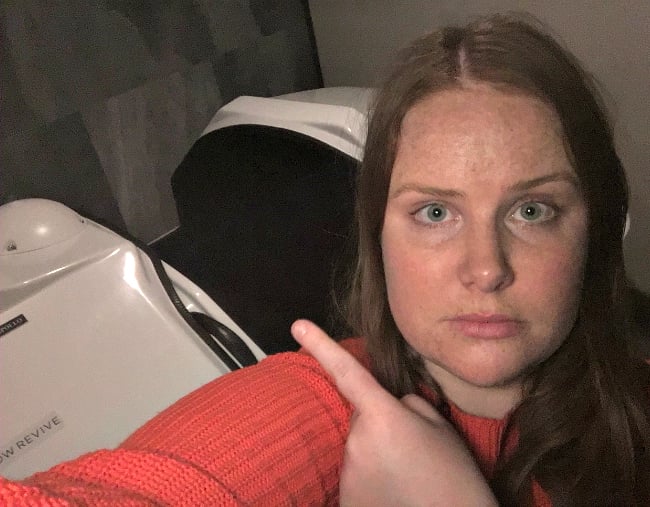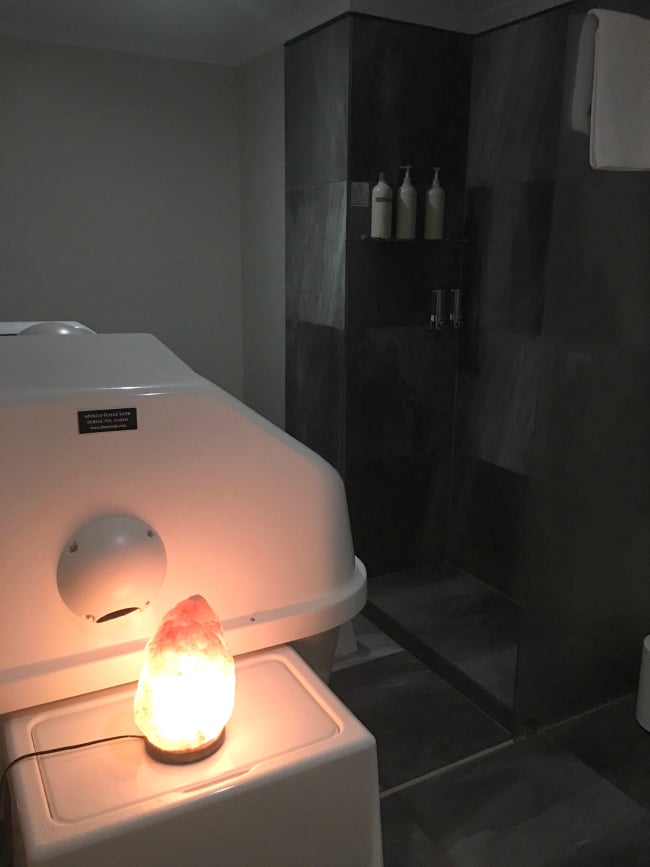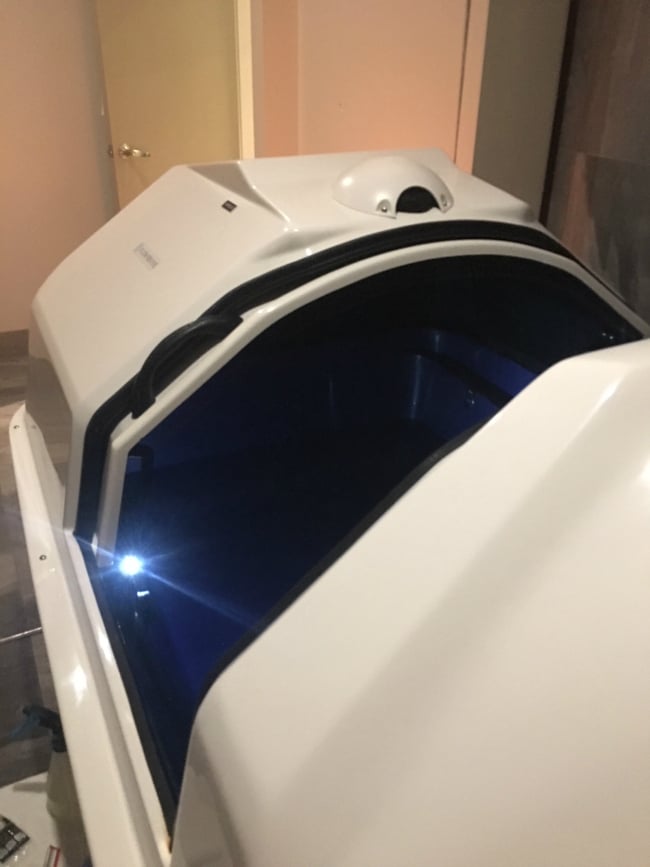
“I’ve been floating for about three years now,” the softly spoken attendant casually told me as he walked me through Flow Revive’s Scandi-style foyer to a dimly lit room.
In the middle of the stone sauna space sat a wooden footstool, lots of white towels, a shower cap, earplugs and what I imagined to be a white, shiny space pod.
“This is where you’ll be spending the next 75 minutes,” he said, gesturing towards said space pod.
This was my first experience of float tank therapy. And yes, he did mean to use float as a verb, because as I was about to find out, floating is a way of life.
Depending on where you go, you’ll hear float tank therapy referred to as flotation therapy, float therapy, isolation tank therapy, sensory deprivation therapy, or floating.
Put simply, it’s the practice of lying naked (or in swimmers) in a pool of water mixed with so much salt, you float like a cork.
“You’re going to love it, trust me,” he assure me before closing the door, leaving me to strip down, stand awkwardly for a bit, then shower before clambering into the salty, space pod-like chamber pool.
I didn’t doubt I’d have a great time in the pod. The idea of float tank therapy was appealing to me because, unless you’re asleep, when do you ever get over an hour of uninterrupted time to yourself?
No smart phone. No Netflix. No chatter from your housemates, neighbours (depending how thin your walls are) or an open-plan office.
Just you, your naked body, 30 centimetres of luke-warm salty water and your thoughts.
































































































